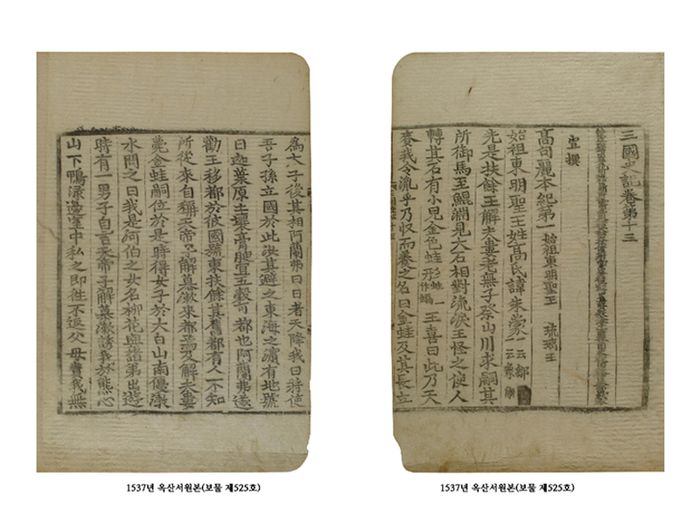(Translation) 2019 東明聖王
| Primary Source | ||
|---|---|---|
 |
Title | |
| English | Tongmyŏng, the Sagacious King | |
| Chinese | 東明聖王 | |
| Korean(RR) | 동명성왕(Dongmyeongseongwang) | |
| Text Details | ||
| Genre | ||
| Type | ||
| Author(s) | 金富軾(Kim Busik) | |
| Year | 1145 | |
| Source | 三國史記(Samguk sagi) | |
| Key Concepts | ||
| Translation Info | ||
| Translator(s) | Participants of 2019 JSG Summer Hanmun Workshop (Intermediate Training Group) | |
| Editor(s) | ||
| Year | 2019 | |
Original Script
Translation
Student Translation : Stella
The founding king [of Koguryŏ], Tongmyŏng the Sagacious King, was from the Ko family, and his name was Chumong [he was also called Ch'umo, and Chunghae by another]. Before this [him having been king], there was King Hae Puru of Puyŏ, who was old and sonless. He paid sacrifice at the mountains and streams, seeking an heir. The horse that he was riding reached Konyŏn, where it saw a large rock. They faced each other, and the horse shed tears. The king found this strange, and had someone turn the rock around. There, there was a small child who was gold in color and froglike in shape [the character for 'frog' in another text is rendered as 'snail']. The king was happy, and said, "The heavens have bestowed this on me as a precious son." Then, the king took and raised the child, naming him Kŭmwa [Golden Frog]. When he grew up, he was made crown prince ...
Historical Records of the Three Kingdoms
Records of Koguryŏ
- Discussion Questions:
(Stella) Regarding 相對流淚 - could we take 相對 and 流淚 as two verb phrases with different subjects? As in, the first VP could apply to both the horse and rock (they are facing each other), but the second VP could perhaps apply only to the horse (the horse shed tears)
(YO) I think that actually makes a more reasonable rendering. Syntactically, both are possible.